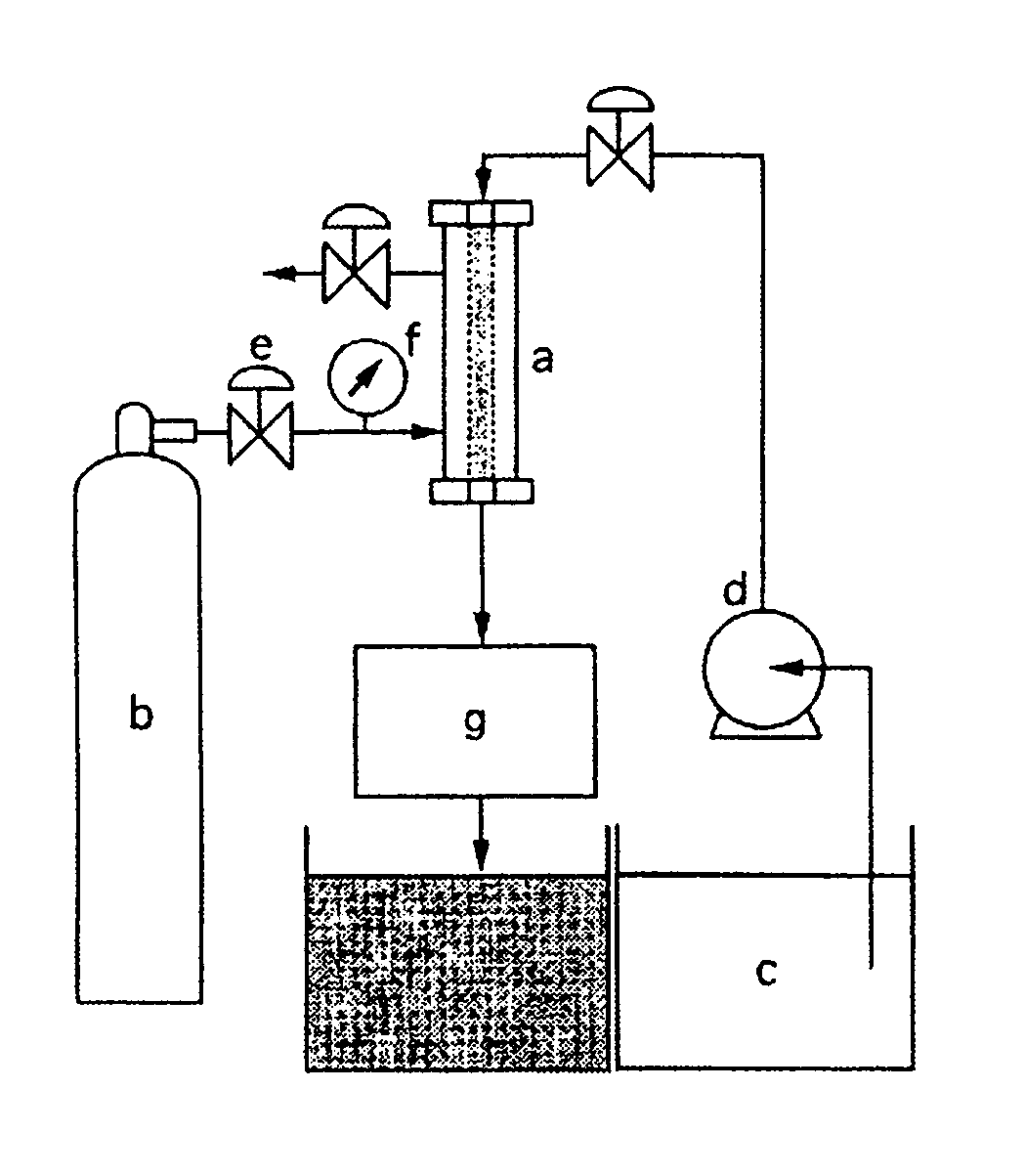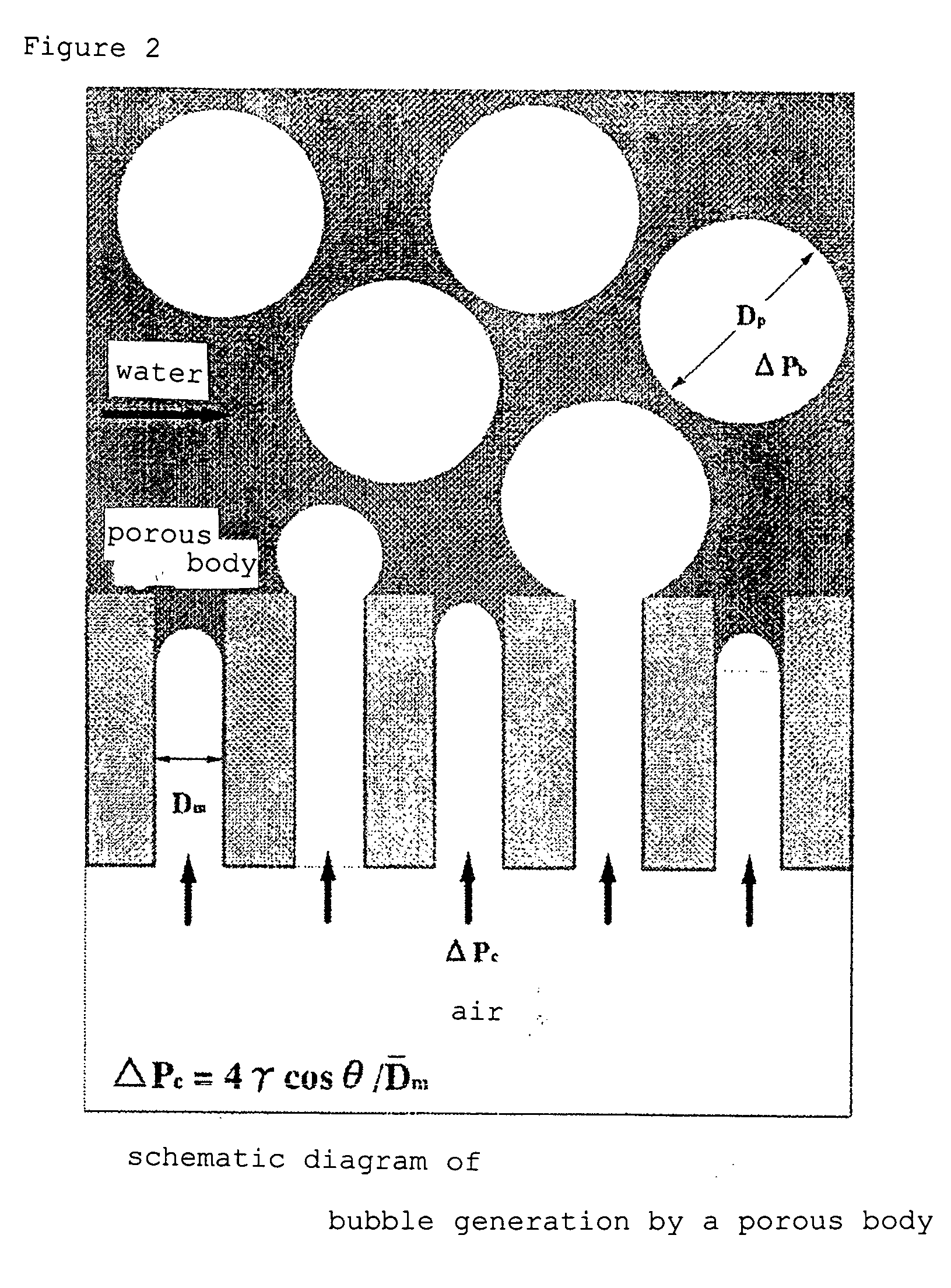Method of forming monodisperse bubble
a monodisperse bubble and bubble technology, applied in the field of monodisperse bubble production, can solve the problems of difficult to produce very fine bubbles with bubble diameters on the order of nanometers, impaired stability, and extremely difficult in the above-mentioned methods to freely adjust the bubble diameter
- Summary
- Abstract
- Description
- Claims
- Application Information
AI Technical Summary
Benefits of technology
Problems solved by technology
Method used
Image
Examples
example 1
[0063] Using the apparatus shown in FIG. 1, air was injected and dispersed through a tubular porous glass membrane having an average pore diameter of 85 nm (SPG membrane from SPG Technology Co., Ltd.) into an aqueous solution containing 0.1 weight % anionic emulsifying agent (sodium dodecyl sulfate). The pressure differenceΔP between the air and the aqueous solution was 3.0 MPa and the liquid temperature was 25° C. The aqueous solution was transported by a pump and the in-tube flow velocity within the membrane was set at 4.0 m / s.
[0064] The generated bubbles were directly introduced into the measurement cell of a particle diameter distribution measurement instrument (product name: “SALD2000”, from the Shimadzu Corporation). The obtained bubble diameter distribution is shown in FIG. 3. As is clear from FIG. 3, the obtained bubbles were highly monodisperse nanobubbles having an average bubble diameter of 750 nm.
example 2
[0065] The relationship between the pore diameter of the porous glass membrane and the average bubble diameter of the generated bubbles was investigated in accordance with Example 1 by varying the average pore diameter of the porous glass membrane. The results are shown in FIG. 4. As is clear from FIG. 4, a linear relationship given by Dp=8.6 Dm exists between the average bubble diameter Dp and the average pore diameter Dm.
example 3
[0066] The relationship for the minimum pressure ΔPc (critical pressure) at which bubble generation began for different average pore diameters in the porous glass membrane was investigated in accordance with Example 1 by varying the average pore diameter of the porous glass membrane. The results are shown in FIG. 5. The relationship between ΔP and Dm was in approximate agreement with the equation shown above by (1) ΔP=4γ cos θ / Dm.
PUM
| Property | Measurement | Unit |
|---|---|---|
| Fraction | aaaaa | aaaaa |
| Fraction | aaaaa | aaaaa |
| Fraction | aaaaa | aaaaa |
Abstract
Description
Claims
Application Information
 Login to View More
Login to View More - R&D
- Intellectual Property
- Life Sciences
- Materials
- Tech Scout
- Unparalleled Data Quality
- Higher Quality Content
- 60% Fewer Hallucinations
Browse by: Latest US Patents, China's latest patents, Technical Efficacy Thesaurus, Application Domain, Technology Topic, Popular Technical Reports.
© 2025 PatSnap. All rights reserved.Legal|Privacy policy|Modern Slavery Act Transparency Statement|Sitemap|About US| Contact US: help@patsnap.com



